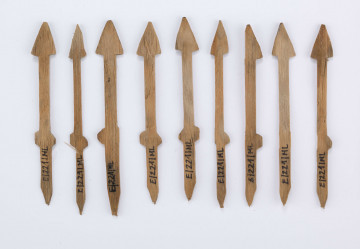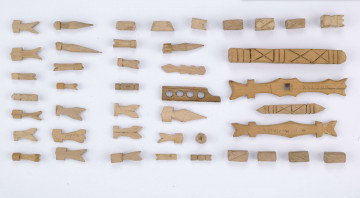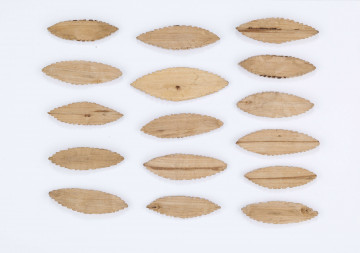
Game `Pick-up Sticks`
1901 — 1920
National Museum in Lublin
Part of the collection: Middle Ages
The carefully carved wooden gaming counter discovered during excavations in Szczecin was for a long time thought to be a chess tower. However, in the light of archaeological discoveries and recent research on gaming in the Middle Ages, it is more likely to be associated with the Scandinavian board game tafl, which used quadrilateral boards with an equal and odd number of squares vertically and horizontally. There are indications of a Germanic origin for Scandinavian games, dating back to around the 5th century. The whole group of tafl games refers to war games. The gaming counter from Szczecin is most likely the king or chief - hnefi, the superior piece in the Scandinavian game hnefatafl. It is played by two players - an attacker and a defender. The most significant gaming counter (chief, king) surrounded by defending gaming counters is in the centre of the board. The attacker’s goal is to approach the king and knock him down. On the other hand, the defender gets the king to one of the four corner squares. The same gaming counters could be used to play different variations of tafl, both on fields and at line intersections. Both boards and various gaming counters made of amber, horn, bronze, wood and even animal teeth are known from excavations. Some of the boards survive in their entirety, but most in fragments, in centres dating to the Viking period in Ireland, Scotland, England, Shetland, Norway, Sweden, the Faroe Islands, Denmark, and Germany. Gaming counters are discovered much more frequently. Unique pick-up sticks made of walrus tusk come from Szczecin.
Anna Bogumiła Kowalska
Author / creator
Dimensions
cały obiekt: height: 2.8 cm, width: 1.1 cm
Object type
game piece, toy
Technique
hand made, individual
Material
wood
Origin / acquisition method
field research
Creation / finding place
Owner
Muzeum Narodowe w Szczecinie
Identification number
Location / status

1901 — 1920
National Museum in Lublin

1901 — 1920
National Museum in Lublin

1901 — 1920
National Museum in Lublin
DISCOVER this TOPIC
National Museum in Lublin
DISCOVER this PATH
Educational path